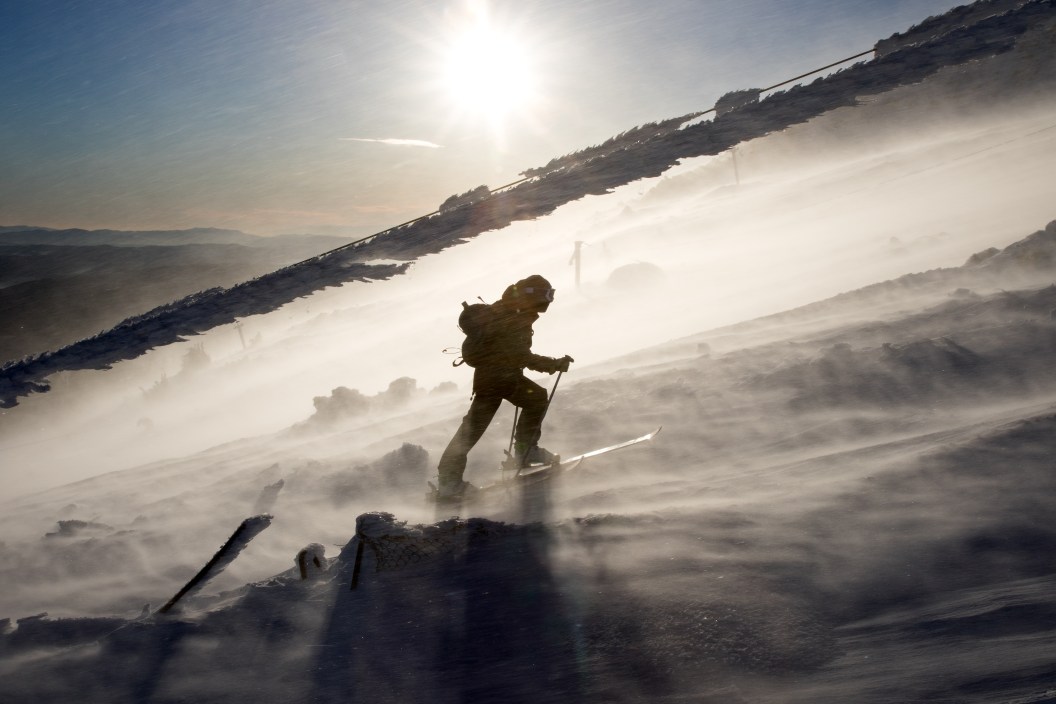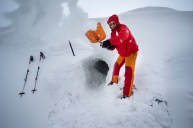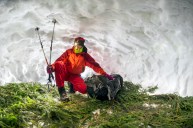While winter can be a fun season, it can also be dangerous. Snow, cold temperatures, and slippery conditions can quickly turn an easy summer day outside into a winter survival situation. Whether you're winter camping, ice fishing with your buddies, or just going for a walk on a backroad in the fresh snow, you should keep the knowledge in your back pocket of how to handle some of the dangers that are unique to winter recreation.
As a mountaineering guide living in Alaska, winter never really ends for me. I'm also a wilderness EMT and much of my work deals with preventing and treating medical emergencies in the always-snowy backcountry. These are the five most common emergencies I see in the winter, as well as how to identify and—most importantly—avoid them.
1. Hypothermia

Getty Images, Jelena Stanojkovic
How It Happens: While we all expect to get a little cold in the winter, hypothermia is a danger zone: Your body begins losing heat faster than it can produce heat. This drops your body temperature to dangerous levels. Mild hypothermia is uncomfortable, but the real danger lies in how quickly it can progress to shock, unconsciousness, and, eventually, death.
Warning Signs: Someone may be mildly hypothermic if they start shivering, stumbling, or becoming significantly quieter. If mild hypothermia progresses to severe hypothermia, the person may stop shivering and become incoherent. Severely hypothermic people often are unable to move. Severe hypothermia can quickly lead to cardiac arrest, shock, coma, and death, and should be treated as an emergency survival situation.
How to Avoid It and Treat It: To avoid hypothermia from the outset, wear the right layers for your winter activity. It's important to keep these layers dry; you can become hypothermic at temperatures above freezing—above 40 F, in fact—if you're wet from rain, sweat, or cold water. Stay hydrated and refuel with calorie-dense snacks often to help keep warm.
If someone does become mildly hypothermic, have them change out wet layers for dry ones, put on more dry layers if they're not wet, and/or start exercising to raise their core body temperature (a round of jumping jacks or air squats does wonders).
If mild hypothermia progresses to severe hypothermia, it is a life-threatening emergency situation that could result in cardiac arrest. Do your best to keep the hypothermic person warm—it's vital to get them out of the elements, and soon—and call emergency services.
2. Carbon Dioxide and Monoxide Poisoning
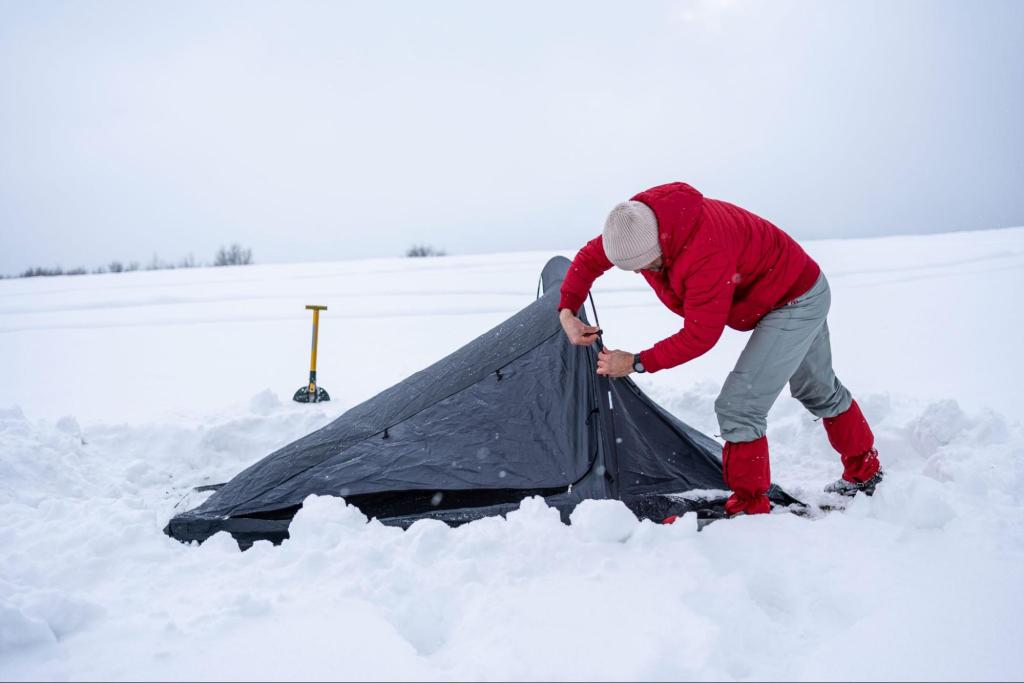
Getty Images, Daniel Balakov
How It Happens: Carbon dioxide is a gas that we actually exhale with every breath. Typically, this isn't an issue, as our exhales are dispersed into the air around us. However, in an enclosed space like a tent, carbon dioxide can build up, starving your body from oxygen and causing tissue damage and death. Camp stoves and other gas-burning devices give off carbon dioxide—and because carbon dioxide is odorless, tasteless, and colorless, it is a silent killer.
Four-season tents are specifically designed to keep out wind and snow; this tight construction also means that they are not well ventilated, and are more prone to carbon dioxide buildup. This is especially true in a snowstorm, when snow can pile up on the outside edges of your tent, sealing it even tighter.
Warning Signs: The initial stages of carbon dioxide poisoning cause headaches, dizziness, and nausea. Eventually, if you don't access fresh air, it causes organ damage and death.
How to Avoid It and Treat It: Keep any vents in your tent open—particularly when you're sleeping—and make sure you're clearing snow away from your tent during a storm.
If you're cooking in your tent or the vestibule, be very careful of carbon monoxide buildup from your stove. Camp stoves give off carbon monoxide, which can easily compound in a small space. In one study, burning white gas for just 20 minutes raised the carbon monoxide levels inside a four-season tent to dangerous levels.
If you cook inside your tent, do so only in the vestibule and make sure your vestibule doors are open. If you start to feel sleepy, dizzy, or nauseous, immediately turn off your stove and get outside in the fresh air.
3. Avalanches
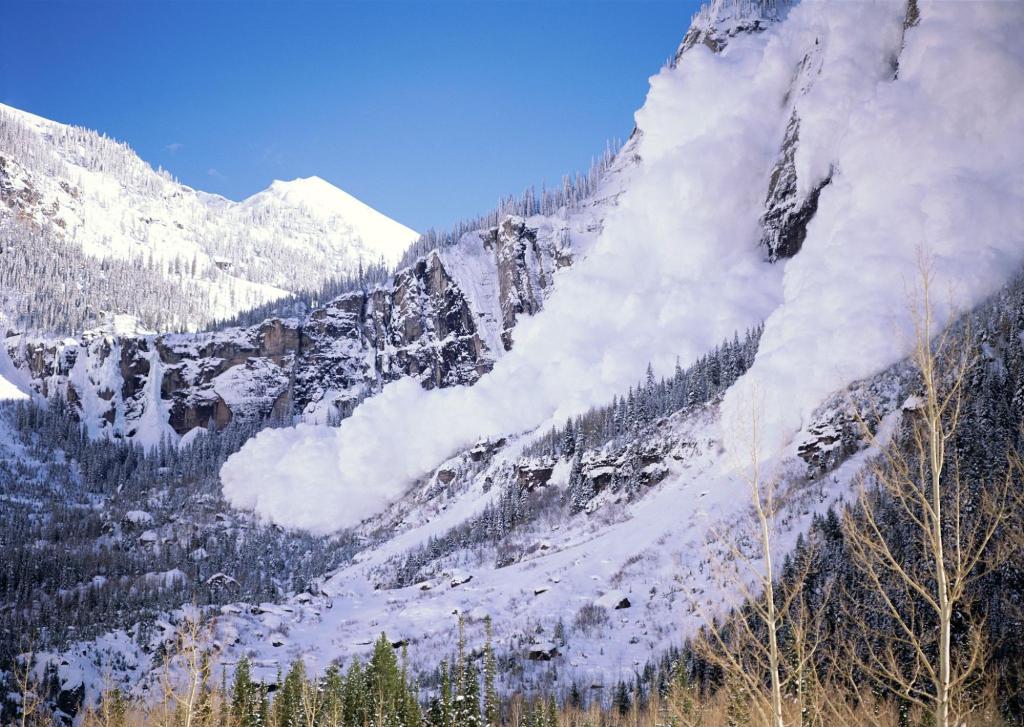
Getty Images, DOUGHBERRY
How It Happens: Avalanches are incredibly destructive forces of nature, but they aren't random. They require a cohesive slab of snow, a hill steep enough to slide, and a trigger (like a snowstorm or you moving across the hill). Avalanches can destroy houses, tear down power lines, and derail trains. They kill an average of 28 people in the United States each year, either through asphyxiation when someone is buried, or trauma.
It's not just backcountry skiers and snowboarders who are getting rolled up in avalanches; anyone who is recreating in steep, snowy terrain—including hikers, snowmobilers, sledders, and snowshoers—is also at risk.
And keep in mind, there may be someone else nearby you don't know about who is unknowingly putting you in danger.
Warning Signs: Certain conditions make avalanches more likely to happen, like the steepness of a hillside or mountain. Avalanches generally happen on slopes that have an incline of 30 to 45 degrees (basically, steep enough to have fun sledding or skiing down). By avoiding these angled slopes, you can avoid avalanches.
Avalanches are also more likely to occur after a big change in weather, particularly a heavy snow or rain storm, windy conditions, or rapid warming. Wait at least 36 hours after a big snow or windstorm before going into the mountains or near any steep slope.
Avalanches can be hard to predict, so your best bet is to stay in low-angle terrain, especially if you don't have any formal avalanche education.
How to Avoid It and Treat It: If you are going to be playing in the mountains this winter, make sure you have the right avalanche gear, take an avalanche course, and check the avalanche forecast before heading out.
(Dis)Honorable Mentions
These two conditions spike in winter. While they probably won't kill you, they can seriously risk your life and limbs (literally).
1. Frostbite

Getty Images, Yuliya Movchan
How It Happens: Frostbite is a cold-weather injury wherein your tissue freezes. This usually happens on your extremities; your nose, cheeks, and ears are often exposed to the cold, making them more susceptible, while your fingers and toes have less blood circulation to help keep them warm. While frostbite is unlikely to kill you, I have seen plenty of people lose fingers and toes in the mountains because of it.
Warning Signs: The first signs of frostbite are typically pain and redness in an area of your body. Your fingers or feet may feel clumsy and stiff. It can then progress to white or grayish-yellow skin that feels firm or waxy, and numbness. If frostbite is left long enough, your entire body part may freeze, resulting in blistering and possible limb loss.
How to Avoid It and Treat It: Make every effort to keep your feet and hands warm with the proper winter gloves, boots, and hand and toe warmers if it is below 32 degrees F. Wear liner gloves underneath your mittens, and never expose your bare hands if it's below 0 degrees or if there is significant windchill; frostbite can happen in just minutes in those temperatures. Wear a neckwarmer that you can pull over your face to protect it, and a hat or hood to cover your ears. Your nose, ears, and cheeks are susceptible to frostbite so you want to make sure to keep them covered.
If you feel any pain or numbness in your extremities or notice them turning white or feeling firm, address it immediately: Passively warm your hands by putting on warmer gloves, tucking them into your armpits, or going inside. Don't tough it out.
Remember: It's not possible to tell how severe your frostbite is until it is rewarmed. I've had mountaineering clients tough out what they thought was just a mild case of frostbite, only to have eight fingers turn black with rewarming and eventually have to be removed.
2. Dehydration
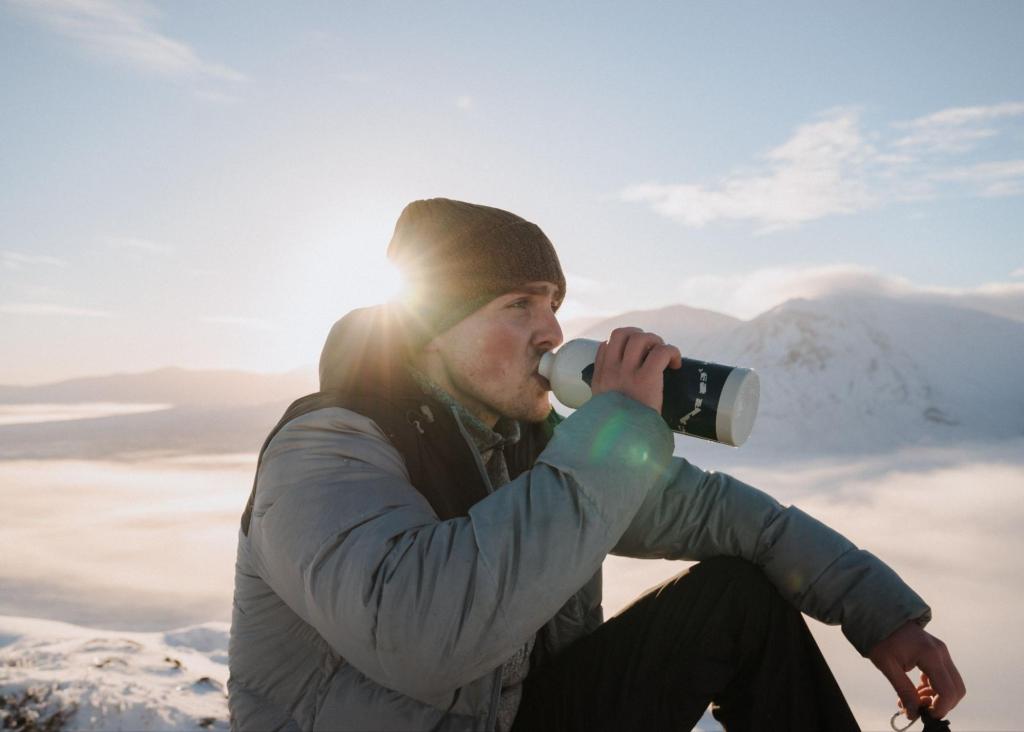
Getty Images, AscentXMedia
How It Happens: While dehydration is a risk any time of the year, it is especially difficult to mitigate in the winter. Cold temperatures mean that you're likely not sweating, a key clue that usually triggers you to drink water. You generally aren't as thirsty in cold weather, either, and trying to choke down Nalgenes full of cold water is not appealing in the slightest.
Dehydration can cause weakness, confusion, and muscle cramps, all dangerous in the backcountry any time of the year. It also increases your risk of hypothermia and frostbite; most victims of frostbite that I have treated have also been severely dehydrated.
Warning Signs: Watch the color of your urine when you pee; it should be yellow or clear (luckily, this is actually very easy to do against white snow). A dry mouth, headache, or dizziness are all also signs of dehydration.
How to Avoid It and Treat It: Take sips of water every time you stop. Add electrolytes to your water to help your body rehydrate more efficiently. You can also bring a thermos full of your favorite hot drink; you're much more likely to stay on top of your water intake if it tastes good.
